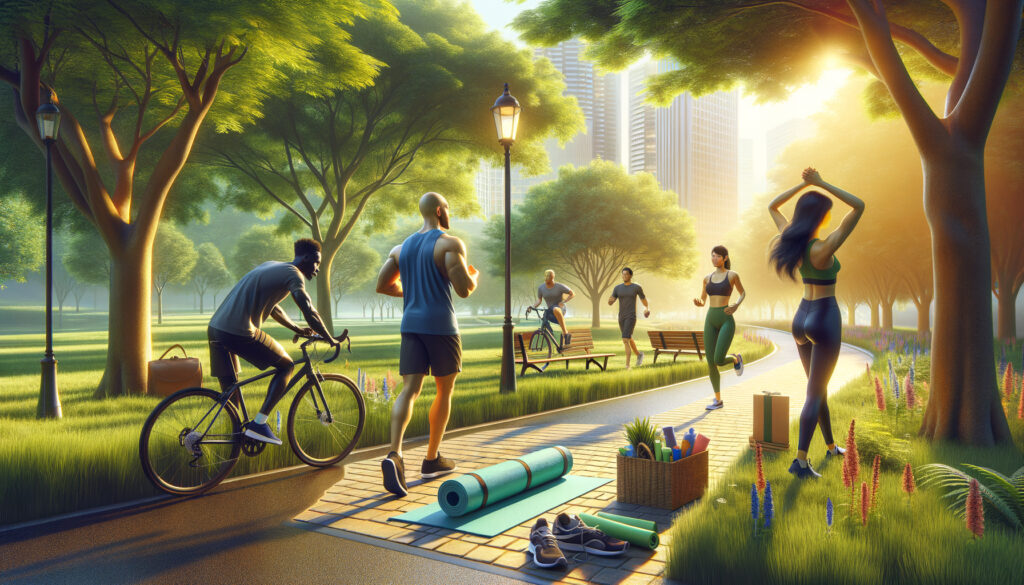American Heart Association Physical Activity Recommendations Your Guide
It discusses the health benefits and offers suggestions on overcoming common barriers.
The main recommendations of (Physical Activity)
In the view of the AHA, the clear message is ‘Move more, with greater intensity, and sit less.’ Studies confirm that being active helps health, prevents illness, and improves life quality.
A. For Adults:
This includes activities like brisk walking. They should also do the same amount of vigorous activity. Starting with simple exercises in your middle years can help you later on. Combining the two is ideal.

**Strengthening of Muscle:**
Adults should engage in muscle-strengthening activities at least 2 days each week. This can include weight or resistance exercises to build and keep muscle groups.
As children (3 to 5-year-olds) and toddlers (3-)
Minimising Sedentary Time: We should reduce our time spent on activities that don’t involve movement. This means being a couch potato or walking around the office while others watch you.” Increased Benefits: “The more time you spend being active each week, the more you reduce your risk
B. For Kids:
Children 3 to 5 years old: “They should be physically active and moving around often during the day,” says Dr. Yee. He suggests kids need “3 hours a day of willful physical activity (light, moderate, and vigorous).” Children aged 6-17 need at least 30 minutes of moderate exercise each day. “More is even better,” says paediatrician Pericak-Dubose.
Vigorous Activity: “At least, for boys and girls, vigorous activities three or more times a week.” (AHA Recommendations for Physical Activity in Adults and Kids).
Strengthening Our Muscles and Bones: Your Guide
Include muscle and bone-strengthening activities. Do weight-bearing exercises at least 3 times a week.
(AHA recommendations for physical activity in Adults and Kids).
Gradual Progression: ‘Increase amount and intensity gradually over time.’ (AHA Recommendations for Physical Activity in Adults and Kids).
For Kids, Parents Limit Sedentary Time: Kids should not be inactive for over 60 minutes at a time. | Active Kids Are Healthy Kids)
II. Intensity
Physical activity means using energy in different ways. This can be walking, stretching, or doing yoga.
Aerobic (Cardio) Activity: Elevates heart rate and improves cardio-respiratory fitness.
Moderate Intensity: “Your heart will beat faster. You’ll breathe harder than usual, but you can still talk.”
Vigorous Intensity: Requires a higher effort. You will “get warm and start to sweat” and not “keep on talking much before becoming breathless.” Examples include uphill hiking and
**Structured vs. Unstructured Play (for Kids)**:
The University of Nevada, Reno Extension recommends the “60-60-60” rule. Kids should engage in 60 minutes of STRUCTURED activity each day. They should have 60 minutes to several hours of free play or unstructured activity each day! 60 mins
Structured play is “adult-led,” with set goals. It helps teach the basic skills of moving (e.g. hopscotch, Red Light Green Light, sports drills).
III. The Significant Health Gains of Physical Activity
Regular exercise has a positive impact on long-term health and well-being for everyone.
Lower Risk of Chronic Diseases: Reduced chances of:
- Heart disease
- Stroke
- Type 2 diabetes
- High blood pressure
- Dementia
- Alzheimer’s
- Some cancers
- Pregnancy complications
**Improved Mental Health:** You may notice fewer symptoms of depression and anxiety. Your mood can get better, and stress levels may drop.”
Enhanced Cognitive Function: Better sleep boosts cognition. This includes memory, attention, and processing speed. For children, it supports brain development, function, and creativity. It may also help improve health conditions like Attention Deficit Hyperactivity Disorder.
Physical Health Improvements: Better sleep leads to less weight gain and reduced obesity. It also enhances bone health and balance, lowering fall risks. Additionally, it improves cardiorespiratory fitness.
” (Activity and Health?). Quality of Life: Leads to “better quality of life and sense of well-being.” IV.
The Dangers of Sedentary Behaviour :
Health Risks: Excessive sitting and inactivity can lead to serious health issues. Studies show a higher risk of heart disease, type 2 diabetes, colon and lung cancers, and even early death.
Even if you work out often, sitting for long periods can still hurt your heart and blood vessels. It doesn’t matter how much you move.”
Sitting too much may raise the risk of heart disease.
Rising Sedentary Time: U.S. adults spend about six to eight hours a day sitting. Some studies suggest it could be over nine hours.
Children’s Screen Time: Experts recommend that children over two years old have one to two hours of screen time each day. This does not include time spent on homework.
“Overcoming Barriers to Physical Activity: The most common barrier is ‘lack of time.’ (Breaking Down Barriers to Fitness.) But, various strategies can help: A. Common Barriers and Solutions. Lack of Time: Identify 30-minute slots in your week.
Select activities that blend into your daily life. For example: Your guide
- Walk around your neighbourhood.
- Take the stairs at work.
- Exercise while watching your favourite TV show.
“Make it a habit to walk and talk.” Twist work calls into opportunities for doing both.
Arrange walking meetings. (Breaking Down Barriers to Fitness.)
Can’t open up to friends or relatives? Share your goals and ask for support.
Do things together as a family and bring pets along.
Ask friends to join you.
Join a local YMCA or walking club. Group activities are often more fun and keep you motivated longer than working out alone.your guide
Trade off workout times with a friend if needed for childcare. (Breaking Down Barriers to Fitness).
Lack of Enthusiasm/Energy: Plan (e.g., keep sneakers in the car or at work).
Mark the times for activities on the schedule, then cross them off as they occur.
Identify your most energetic time of day.
Belonging to a group gives motivation.
‘A new person once said to me, “The hardest part is taking that first step…” (Breaking Down Barriers to Fitness).’Your guide
- No facilities or interest?
- Pick activities that need little gear, like:
- Walking with a ball
- Jogging
- Jumping rope
- Calisthenics
Make use of community resources such as low-cost (parks, workplace wellness programs).
Find free virtual exercise programs online (e.g., AHA’s online classes).
When you travel, pack walking shoes—Utilise hotel facilities, such as the exercise room (Breaking Down Barriers to Fitness).
Feeling unsure or uncomfortable? Talk to a healthcare professional. They can help you pick the right exercises.your guide
Start slow, especially when walking.
Find a walking partner, wear comfortable shoes, and pick safe routes.
B. Tips on Long-term Success:
Realistic Expectation:
Consult your healthcare provider if you have chronic diseases. Look for opportunities to be active throughout the day (e.g., walking the mall or taking the stairs). Don’t be broken; begin the process of starting over at a slow pace. Enjoyment: Select activities that offer variety to prevent boredom. Involve family, friends, and music or audiobooks to escape awareness of one’s surroundings.your guide
(Getting Started: Track Progress: “Note your activities on a calendar or in a logbook.” Reward yourself at milestones with non-food items. VI. Encouraging Family Physical Activity Parental Role Models: “Practice what you preach.” Children are more likely to be active if they see adults engaging in physical activity. Family Planning: Set limits on screen time and suggest age-appropriate alternatives.
Programmed TV Avoidance:
- Encourage family game night.
- Play basketball.
- Go out with the dog.
- Run in parks.
- Dance.
- Do a bit of housework.
Adjourning with Caregivers: For kids in cr…
Furniture
Objects of Art
For children in childcare, open communication with parents and providers is crucial. This helps meet physical activity goals. Studies show that children in daycare are often inactive. They urge us to move more, exercise harder, and sit less. This can improve our health, reduce disease risk, and enhance quality of life, your guide



